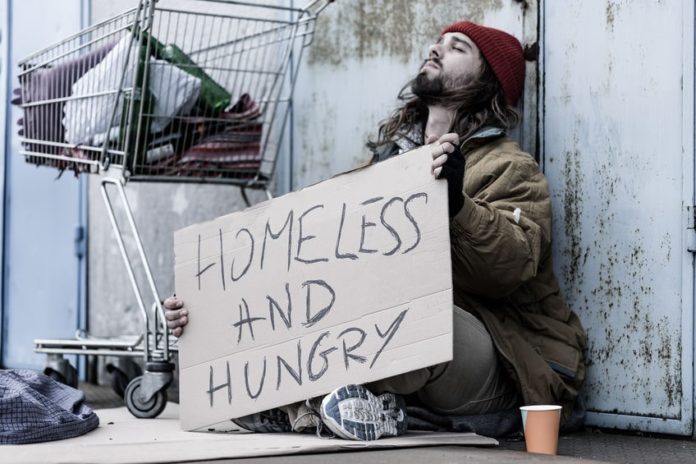
It’s natural to straighten up the place when you’re expecting company.
You want your guests to get the best impression of you and your home, even if that impression isn’t quite right. You clean; you dust; you straighten; you shine. You make everything neat and pretty.
Over 150,000 people are planning to come to Miami to partake of the NFL championship, even though only 65,000 will get through the turnstiles to see the game in person. However, over 95 million will watch the game. And in the two weeks prior to the game, television stations from all over the world will send crews to roam Miami-Dade looking for stories.
The problem of homelessness is one of the biggest issues facing our urban core and there are myriad factors driving it: the outrageous cost of rent; a low-wage service-oriented economy, and an opioid crisis that has moved from prescription pills to black market substances.
For most people, the problem is out of sight and out of mind. In prior decades, Downtown Miami would empty out at sunset as long caravans of commuters trekked north, south and west to the comfort and safety of the suburbs. Only after dark would the homeless venture out.
The vast tracts that once were nothing but parking lots along Biscayne Boulevard have sprouted condos, now home to tens of thousands of residents. Today, at least 100 homeless men and women camp out in Bayfront Park in close proximity to families that would have, in the past, retreated to Aventura, Pinecrest, and Palmetto Bay.
Here’s a little more history. The City of Miami and the county have done everything they could in the past to make sure that the homeless were swept up and swept out before the big game.
The second Super Bowl was played in the Orange Bowl in 1968 and Miami played host to five of the first 13 championships.
Things changed in 1979 with the arrival of the cocaine cowboys and the Mariel boatlift in 1980 that saw one-eighth of a million refugees flood South Florida in a matter of a few months. Our once vaunted image as the “Sun and Fun Capital of the World” was replaced by stories of drug gang shootouts at local malls and murders by the score.
Our tourist economy took a hit and it wasn’t until 1989 that South Florida hosted another Super Bowl. We weren’t going to take chances. We polished Downtown Miami and the area around the Orange Bowl. We also swept up the homeless. The City of Miami Police moved in and made mass arrests and, in the process, destroyed what few possessions the homeless had.
The City of Miami and its Police Department eventually were the subject of a federal class action lawsuit. In 1992, U.S. District Court Judge C. Clyde Atkins ruled that the police could no longer arbitrarily arrest the homeless for the dual “crimes” of being poor and homeless. He also ordered the city to establish two “safe zones” where the homeless would be safe from arrest for eating, bathing, and sleeping in public view.
It’s not like we aren’t aware of the homeless. We have a Homeless Trust. It was formed after the disastrous response by the City of Miami to the homeless in the weeks leading up to the 1980 Super Bowl. It’s funded by a one percent food and beverage tax and those receipts are leveraged to obtain funding from the federal and state government and from private donors.
The Homeless Trust is chaired by local attorney and mega-lobbyist Ron Book and vice chaired by Rabbi Solomon Schiff. Judge Steven Leifman serves as treasurer. Book, Schiff, and Leifman are heavy hitters in this community.
Miami is not the only city that has used heavy-handed tactics when it comes to the intersection of the homeless and the Super Bowl. San Francisco hosted Super Bowl L in 2016. In the weeks leading up to that game, the city relocated its homeless population into shelters, leap frogging them over those who were on the waiting lists for shelter beds. They successfully emptied out the prime waterfront parks. It was a Band-Aid that they put over their homeless problem, emptying the shelters of the homeless after the big party was over, sending them back into the streets.
We have about 12 weeks until the Super Bowl. We need to hear from the Homeless Trust on how it is going to deal with the homeless problem going forward. We need to hear from Miami mayor Francis Suarez with regard to the homeless. And we need to hear from Miami-Dade Mayor Carlos Gimenez about how the county is going to address the homeless issue not only during the Super Bowl festivities but going forward.
On Sunday, Feb. 2, 2020, we’ll be hosting Super Bowl LIV. Although the venue will be at the Hard Rock Stadium in Miami Gardens, the showcase events are slated for Miami and Miami Beach. The temptation may be too great to fall into old habits, putting away the homeless while the guests are here like a rich Southern family might lock a crazy grandmother in the attic.
If all we do is sweep the problem under the rug for a week or two and pretend it never existed, it will only get worse, not better.






